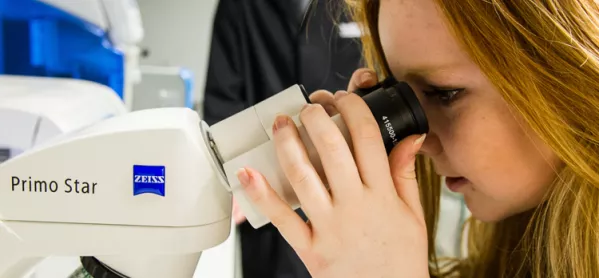In a busy school science lab it can be easy to miss hidden talent among the hustle and bustle of demanding students, keeping teams on task, making sure everyone is using the equipment safely and hoping that they will find the results they are expecting.
But spotting that student whose passion for science is not immediately obvious could be the key to one day finding the cure to cancer or a source of safe renewable energies.
Liverpool Life Sciences UTC is a pretty unusual science school. A longer school day, extensive industry curriculum support and a commitment from our students to future careers in science and healthcare means we are better placed than most to identify those who will go on to be the leaders of research in the future.
Here are our tips for applying some science to the search for hidden talent:
- Use your data
So many of us now use the Cognitive Abilities Test (CAT4) for target setting, but are we taking full advantage of the different areas of information it provides? One often underused component that demonstrates a unique aspect of intelligence is spatial ability. This has established links with potential in science, technology, engineering and maths (STEM) subjects. Reflecting on a student’s spatial scores − particularly where these are around 10 points higher than similar verbal, quantitative and non-verbal scores − can help you to identify talent in science.
- Spot the patterns
Data from our students has allowed us to spot patterns. For example, those with spatial scores at least as high as or higher than their quantitative scores demonstrated particularly strong practical experimental skills. Knowing this pattern gives us some idea of who we should be keeping an eye on in future.
- Alter your environmental variables
Allow students the opportunity to complete extended lab-based projects rather than just the short practical tasks typical of much of the curriculum. Doing this has helped us to identify those with the skills essential to a future in research. Students who were identified initially in the data demonstrated great skill in completing complicated lab procedures with a high degree of accuracy and precision.
- Think beyond the exams
Strong performance in written tests and exams does not always correlate with excellence in the technical and experimental areas of scientific research. Through placing the emphasis on grades and attainment, we may be missing some of the most gifted experimental scientists.
- Investigate further
Our school is still very young and it is too early to definitively say whether CAT4 spatial ability is a consistently good indicator of experimental science ability. But, like all scientists, we are committed to investigating further.
John Dyer is Lead Teacher for Innovation and Lyndsay MacAulay is Director of Enterprise at Liverpool Life Sciences UTC.
Want to keep up with the latest education news and opinion? Follow TES on Twitter and like TES on Facebook
